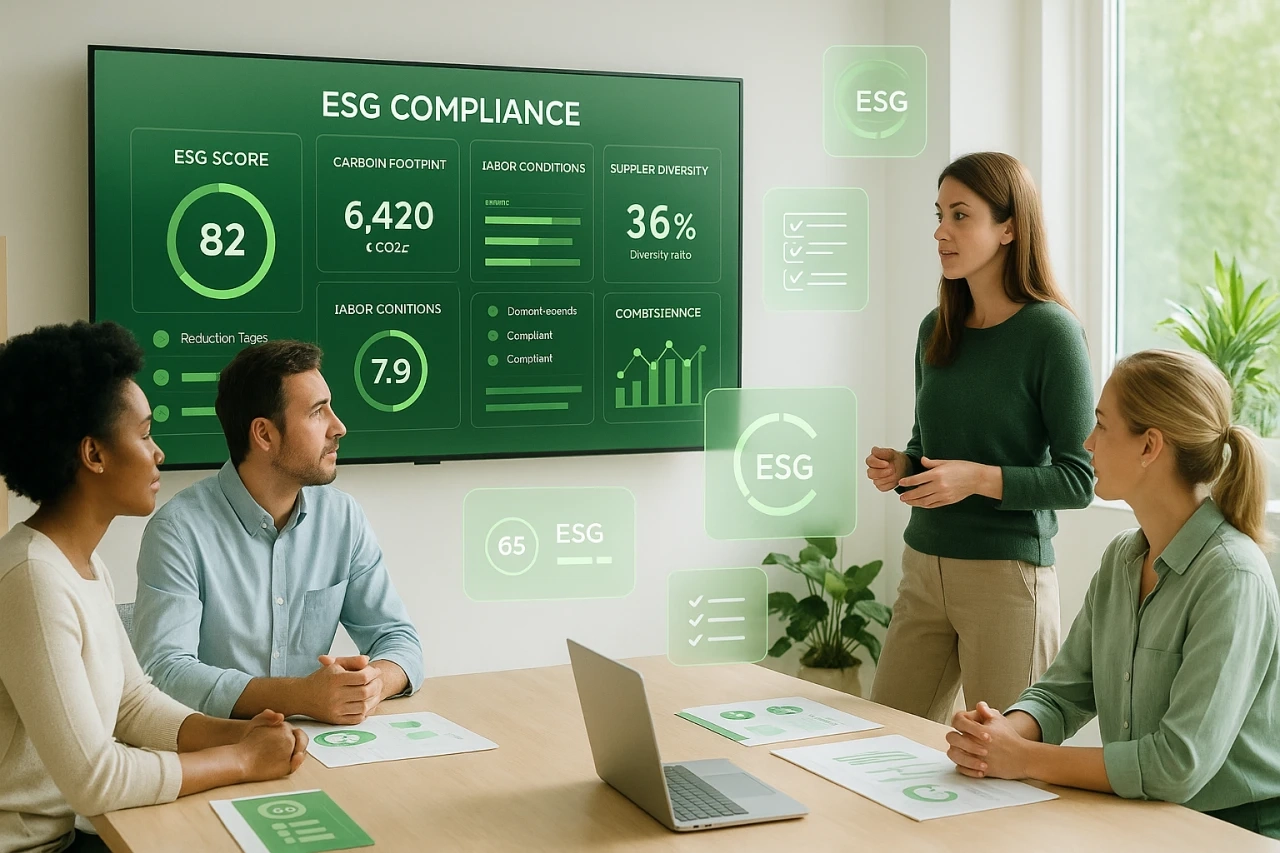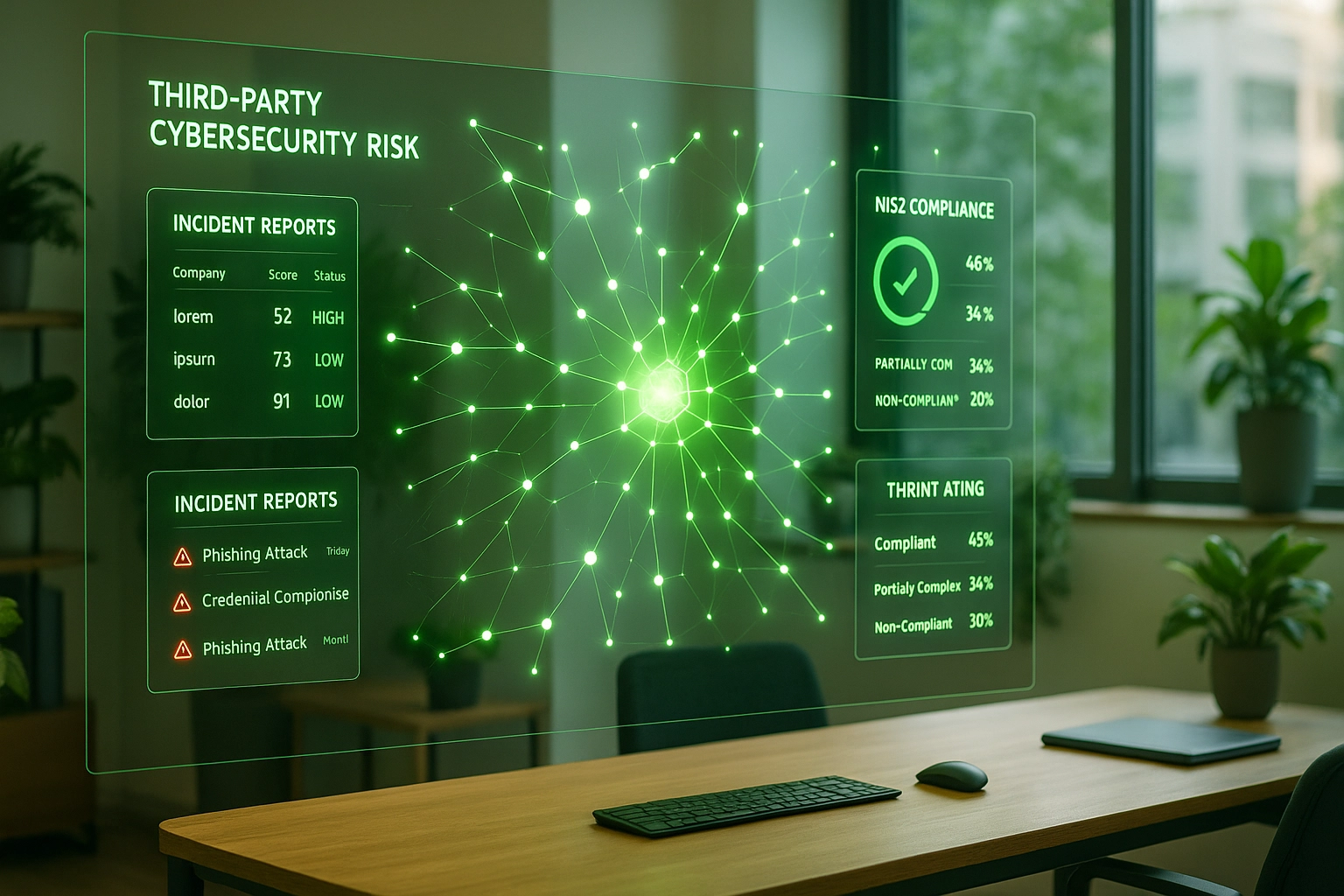Understanding the Impact of the NIS 2 Directive on the Supply Chain

The modern supply chain forms the backbone of European economies, orchestrating complex flows between partners, suppliers, and subcontractors. With the acceleration of digitalization, this growing interconnection exposes organizations to unprecedented cyber vulnerabilities. The NIS 2 directive, effective since October 2024, is revolutionizing the cybersecurity approach by mandating collaborative evaluation of third-party partners.
This regulatory shift affects around 150,000 European institutions and fundamentally redefines third-party governance. The goal now goes beyond internal protection, aiming instead to build collective operational resilience. Organizations must rethink their supplier and subcontractor evaluation methodologies by integrating cybersecurity criteria into qualification and continuous monitoring processes.
Priority sectors reflect this transformation: local authorities are strengthening compliance requirements for public procurement, the industrial sector is tightening control over ICPE sites, and the construction sector is structuring multi-level subcontractor management. This shift towards a collaborative approach turns risk management into a strategic lever for competitiveness.
What is the NIS 2 Directive?
The NIS 2 directive is the new European benchmark framework for the cybersecurity of critical infrastructure and the security of supply chains. Replacing the original NIS directive, it significantly expands the scope of application—from 19 to 35 sectors—with stricter requirements for third-party qualification.
The directive introduces two categories of organizations: essential entities (e.g. energy, transport, healthcare) and important entities (e.g. postal services, waste management, agri-food). Each category is subject to specific third-party governance obligations, with penalties of up to €10 million or 2% of global annual turnover for essential entities.
The harmonization of security standards across Europe aims to create a unified ecosystem for protecting critical infrastructure. This standardization facilitates collaborative evaluation of cross-border partners and enhances collective cyber resilience. In the public sector, this translates into increased scrutiny of digital service providers and public procurement subcontractors, as shown by this SHEMA testimonial.
Why was a new directive necessary?
The evolving cyber threat landscape made it essential to strengthen the European regulatory framework. Supply chain attacks have surged, exploiting vulnerabilities in suppliers and subcontractors to breach otherwise secure organizations.
The original NIS directive revealed critical gaps in the risk evaluation of third parties, exposing vulnerabilities in the protection of critical infrastructure. The NIS 2 directive addresses these gaps with a proactive and collaborative risk management approach, as illustrated by documentary compliance cases in the social housing sector.
The growing interconnection of information systems amplifies the impact of security incidents. A failure at one provider can now paralyze an entire value chain. This highlights the need to integrate subcontractors into organizational security perimeters and adopt real-time monitoring tools for external partners.
Cybersecurity Challenges for Businesses
Cybersecurity has become a major strategic issue for European organizations, with 61% of companies experiencing a cloud security incident in the past year. This dramatic rise—from 24% to 61%—reflects the growing risks posed by interconnected systems and the accelerated digitalization of supply chains.
Supply chain attacks are among the most critical threats in 2025, targeting vulnerabilities in suppliers and subcontractors to compromise multiple organizations simultaneously. This reality calls for a mutualized cybersecurity approach, integrating third-party risk evaluation into global protection strategies.
Emerging threats like ransomware-as-a-service, deepfakes, and IT/OT convergence in Industry 4.0 further justify the preventive philosophy of the NIS 2 directive.
How NIS 2 Impacts the Supply Chain and Suppliers
The NIS 2 directive radically changes supply chain security strategies, mandating systematic vulnerability assessments for direct partners. Cybersecurity now becomes a core selection and monitoring criterion for suppliers and subcontractors.
Each partner is a potential entry point for attackers. The sensitive data flowing through logistics chains are prime targets for cybercriminals.
The systemic impact of cyber failures justifies this transformation: a vulnerability at one supplier can disrupt an entire value chain. In the distribution sector, this interconnection translates into increased scrutiny of e-commerce platforms and logistics providers. Local authorities must now integrate cybersecurity criteria in tenders, turning regulatory compliance into a competitive advantage.
Subcontracting SMEs—critical ecosystem players—must align their cybersecurity practices with the expectations of their clients. This shift transforms third-party supervision into a strategic lever for companies mastering collaborative partner evaluation.
Measures to Achieve NIS 2 Compliance
NIS 2 compliance requires the implementation of proportionate security measures based on each partner’s criticality. Regular risk evaluations are essential, covering secure development practices and incident response procedures.
Organizations must establish robust access controls and maintain continuous monitoring of critical partners. This process demands the integration of cybersecurity criteria in qualification procedures, as seen in collaborative evaluation solutions developed for industry.
Incident management must include notification and coordination procedures with third-party partners. France’s ANSSI supports this shift via the MonEspaceNIS2 platform, which helps identify covered entities and provides cybersecurity resources. This shared best practice model enables organizations to benefit from collective expertise and improve operational resilience.
Want to structure your third-party evaluation approach?
See how our clients are optimizing NIS 2 compliance with proven collaborative audit solutions.
Harmonizing Security Rules Across the EU
The NIS 2 directive marks a turning point in the harmonization of European security rules, establishing a unified legal framework for cybersecurity in 18 critical sectors. This standardization seeks to eliminate national disparities seen under the original NIS directive, where penalties ranged from €10,000 to €19 million depending on the country.
This European harmonization enables collaborative cross-border partner evaluations and strengthens organizations’ cyber resilience. Multinational firms benefit from deploying consistent regulatory compliance strategies across the EU, which simplifies third-party governance.
The creation of EU-CyCLONe (European Cyber Crises Liaison Organization Network) exemplifies this collective effort, supporting coordinated large-scale incident response across EU member states. This mutualization of best practices makes cybersecurity a matter of European sovereignty, requiring stronger collaboration between national authorities.
Implications for International Businesses
For multinational companies, this harmonization offers a major strategic advantage. Instead of adapting to different national rules, they can follow a single framework to deploy cross-border security solutions.
This unified model helps streamline resources through consistent guidelines and reduces the overall cost of security operations. It also simplifies supplier control through collaborative audit solutions designed for global groups.
The impact extends beyond the EU: over 1 million global companies may be affected due to the interconnection of global supply chains.
Concerned about cross-border compliance?
Explore our full guide to supplier cybersecurity evaluation to master ISO criteria and standards.
Resilience: Long-Term Capability Against Threats
Operational resilience is the ability of an organization to absorb and adapt to shocks and disruptions while maintaining critical activities. This extends beyond business continuity to include anticipation, prevention, and recovery from disruptive events. In the context of NIS 2, resilience is essential to protect critical infrastructure and maintain stakeholder trust.
The growing interconnection of systems amplifies the potential impact of incidents across the supply chain. A critical supplier failure can now disrupt multiple organizations at once, reinforcing the need for a concerted strategy as promoted by the directive. Resilience becomes a collective strategic priority requiring continuous evaluation of partner recovery capabilities.
Resilient organizations manage third-party relationships effectively and integrate risk management into core operations. This transformation is powered by continuous monitoring solutions developed for industry, enabling early detection of vulnerabilities that could compromise operational resilience.
Strategies to Build a Resilient Organization
Building a resilient organization relies on four pillars: anticipation, adaptability, communication, and collaboration. These pillars help identify potential risks, adopt new strategies quickly, and maintain trust during crises.
Investing in advanced security technologies is essential, but it must be coupled with deep organizational change. Regular testing and attack simulations help assess protection strategies and improve preparedness. This proactive mindset turns each incident into a learning opportunity to enhance future resilience.
Stakeholder collaboration—both internal and external—is key to achieving end-to-end security. This collaborative approach is exemplified by public sector resilience case studies, highlighting the value of shared frameworks to strengthen adaptive capabilities.
Ready to transform your approach to third-party governance?
See how our continuous monitoring solutions enhance supply chain resilience.
These articles might interest you
-
 09 June 2025Optimizing ESG Evaluation Tools: Enhance Your Supplier ProcessesSecteurFaced with increasing regulatory pressure and the rise of sustainable transformation, organizations must rethink their third-party governance. Integrating ESG criteria into third-party evaluation tools has become a critical lever to meet regulatory requirements and the growing expectations of stakeholders. Even with the temporary suspension of CS3D, many companies now view supplier ESG commitment as a key risk factor […]
09 June 2025Optimizing ESG Evaluation Tools: Enhance Your Supplier ProcessesSecteurFaced with increasing regulatory pressure and the rise of sustainable transformation, organizations must rethink their third-party governance. Integrating ESG criteria into third-party evaluation tools has become a critical lever to meet regulatory requirements and the growing expectations of stakeholders. Even with the temporary suspension of CS3D, many companies now view supplier ESG commitment as a key risk factor […]Read more
-
 14 June 2025Supplier Evaluation Journey: Optimizing Multi-Regulatory Data CollectionSecteurThe complexity of third-party evaluation is intensifying as regulatory requirements multiply. This reality calls for a reform of internal processes and the adoption of collaborative workflows that are essential to ensure compliance while strengthening operational resilience. Optimizing the evaluation journey involves a structured methodology that streamlines document collection, improves supplier quality, and significantly reduces “supplier fatigue.” This context calls for a […]
14 June 2025Supplier Evaluation Journey: Optimizing Multi-Regulatory Data CollectionSecteurThe complexity of third-party evaluation is intensifying as regulatory requirements multiply. This reality calls for a reform of internal processes and the adoption of collaborative workflows that are essential to ensure compliance while strengthening operational resilience. Optimizing the evaluation journey involves a structured methodology that streamlines document collection, improves supplier quality, and significantly reduces “supplier fatigue.” This context calls for a […]Read more
-
 28 January 2025Third-Party Cybersecurity Benchmark: Assessing and Securing Your Supply Chain in 2025SecteurThird-party cybersecurity has become a major strategic concern for organizations in 2025. According to AgileBuyer, 65% of procurement departments consider supplier failures a critical risk, while 42% list cyberattacks as their second most pressing concern. This challenge is especially acute in certain sectors: 88% of heavy industries anticipate major supplier-related risks, and 68% of IT/Telecom companies […]
28 January 2025Third-Party Cybersecurity Benchmark: Assessing and Securing Your Supply Chain in 2025SecteurThird-party cybersecurity has become a major strategic concern for organizations in 2025. According to AgileBuyer, 65% of procurement departments consider supplier failures a critical risk, while 42% list cyberattacks as their second most pressing concern. This challenge is especially acute in certain sectors: 88% of heavy industries anticipate major supplier-related risks, and 68% of IT/Telecom companies […]Read more
-
 27 February 2025TPRM Deployment in the Public Sector: Insights and ExpertiseSecteurIn an environment where interactions with third-party partners play a crucial role in the functioning of public organizations, proactive risk management for these relationships has become a strategic priority. Third-Party Risk Management (TPRM) is now an essential approach to ensure regulatory compliance, reduce financial risks, and prevent cyber threats. With more than 430,000 third parties managed worldwide, Aprovall has established […]
27 February 2025TPRM Deployment in the Public Sector: Insights and ExpertiseSecteurIn an environment where interactions with third-party partners play a crucial role in the functioning of public organizations, proactive risk management for these relationships has become a strategic priority. Third-Party Risk Management (TPRM) is now an essential approach to ensure regulatory compliance, reduce financial risks, and prevent cyber threats. With more than 430,000 third parties managed worldwide, Aprovall has established […]Read more
